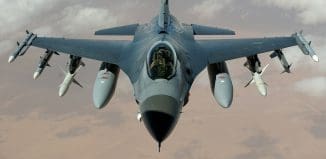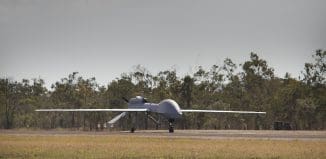Wanted: A Large Ship-Based UAV for Multiple Purposes

This post is also available in:  עברית (Hebrew)
עברית (Hebrew)
The Marine Corps is in the early phases of developing a large Group 5 unmanned aerial system (UAS) that would operate from a ship and provide long-range, long-endurance capabilities for not only the Marine Air-Ground Task Force (MAGTF) but also potentially the Navy’s fleet and Army ground forces. Group 5 UAS typically fly at medium- to high-altitude ranges and can weigh above 1,300 pounds – and are therefore the most complex to launch and recover.
The program will go after seven capability gaps: MAGTF C4 (Command, Control, Communications and Computing with Spectrum Agile Data Routing); early warning; persistent fires; escort; electronic warfare; Reconnaissance, Intelligence, Surveillance and Target Acquisition (RISTA); and tactical distribution.
According to USNI News, the Marines’ initial capabilities document for the MAGTF UAS Expeditionary (MUX) program was approved this month, merging what had been two separate Group 5 UAS requirements that the Marine Corps ultimately determined could be fulfilled with a single air system.
Lt. Col. Noah Spataro, from the Commandant for Combat Development and Integration said much is still not known about this UAS – a notional schedule doesn’t show the service completing an analysis of alternatives (AoA) to select a material solution until late 2018 – but he has some ideas about what this UAS will have to do.
First and foremost, he said, it will be runway-independent. Likely a rotary-wing or tilt-rotor aircraft, the air vehicle will have to take off from and land on Navy ships and should be able to land at ground facilities to refuel and rearm. He said the Army is buying enough MQ-1C Gray Eagle UAVs to field one for each division, but that then ties the division to a runway.
Spataro said there are several efforts going on now to develop technologies that could support MUX – for example, the LightingStrike aircraft participating in Defense Advanced Research Projects Agency (DARPA)’s Vertical Take-Off and Landing Experimental Aircraft program can take off vertically but also has wheels to support a rolling take-off that allows the aircraft to carry heavier payloads.
When the time comes to begin the AoA, all manner of commercial and defense products in varying levels of maturity will be considered, though Spataro said it was unlikely that any single product would meet their needs and instead the service would have to go through the full design and development process.
“Our analysis of alternatives will look at all the possibilities that are out there, all the existing capabilities – things like modified commercial airplanes to MQ-1s, MQ-9s, and developmental things like the Tern program, the ARES program, I mentioned the LightningStrike,” he said. “And then some other constructs that industry has approached us on, like the Bell V-247, which is kind of an offshoot of the V-280. So we’re looking at a lot of options to try to see what makes the most sense”.




























